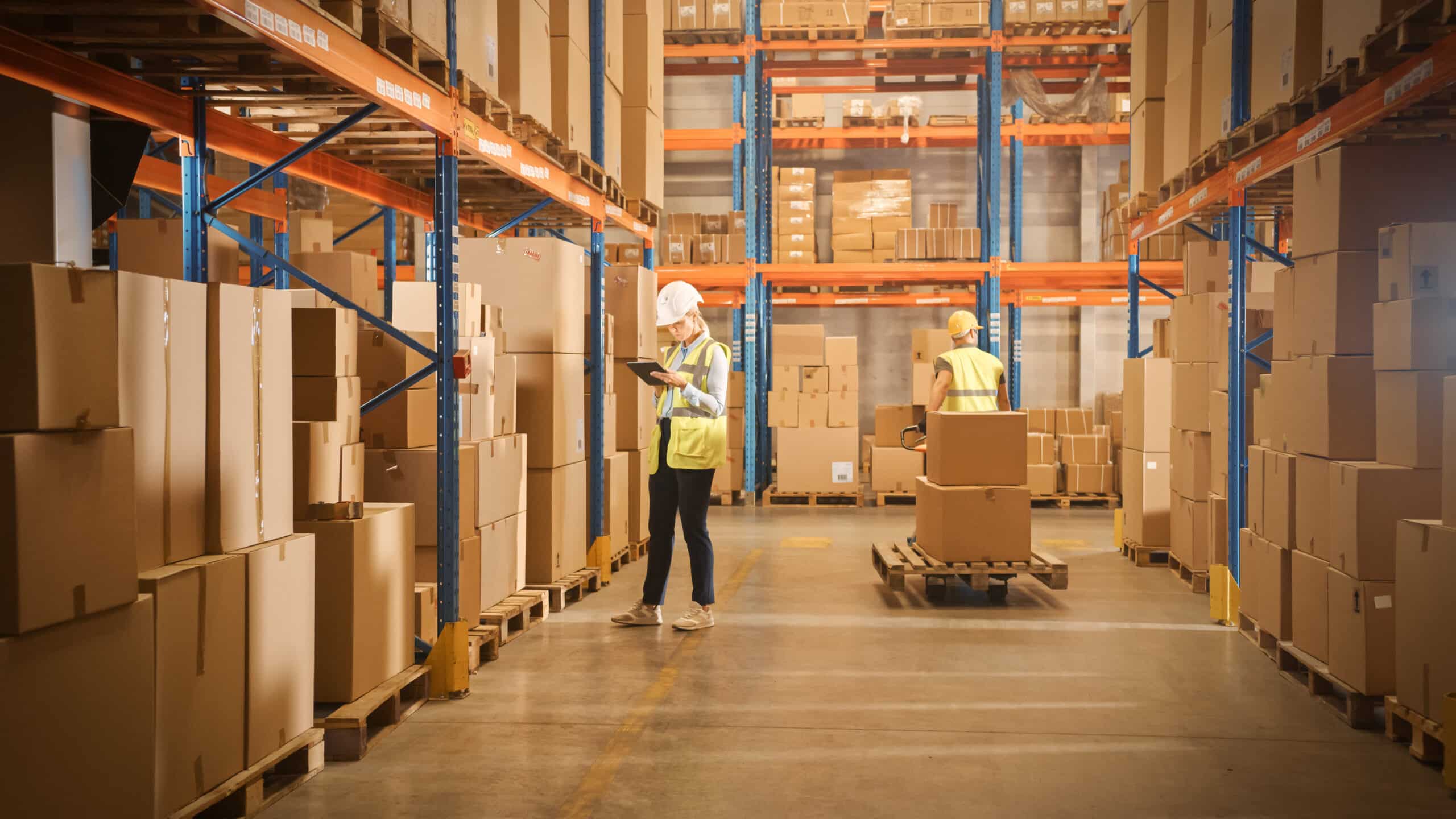Warehouse automation is not a new technology, but it is one that has been rapidly advancing in recent years. In the modern supply chain, warehouse automation is no longer something that’s optional to have: it has become essential for meeting growing consumer demands and business goals.
What exactly is warehouse automation? It refers to any process or technology that helps “automate” your regular warehouse management. You can use warehouse automation to help with essentially any warehouse activity, including receiving, sorting, putting away or picking, packing, shipping, replenishment, and returns.
In 2025 and beyond, warehouse automation is far different than the warehouse automation of years past. Significant advancements in the technology, scalability, and integration of these systems make warehouse automation far more impactful than ever before.
Here’s everything you need to know about warehouse automation, how it’s changing, and how to deploy or upgrade it in your warehouses.
What Exactly is Warehouse Automation?
Warehouse automation involves using technology to perform tasks and processes within a warehouse, with minimal (or non-existent) intervention from humans. At its core, warehouse automation is designed to optimize operations, enhance overall efficiency, and reduce manual labor. It typically aims to streamline tasks that are repetitive and time-consuming, such as picking, packing, sorting, and inventory management. By automating these tasks, businesses can speed up operations, lower costs, and reduce human errors.
Warehouse automation offers a number of critical benefits. In many cases, warehouse automation allows you to reduce workloads on your employees by eliminating many of the repetitive tasks that bog them down. An automated warehouse is likely also a more resilient warehouse: with fewer errors, greater transparency, and real-time systems, businesses can improve their flexibility, efficiency, and adaptability.
In recent years, there have been substantial advancements in warehouse automation, and this growth shows no signs of slowing down: the global warehouse automation market is expected to nearly double in value by the year 2027, to be worth $41 billion. That’s not all: experts have noted that we’re in the midst of a “warehouse automation revolution,” and that robot shipments could increase by up to 50% each year through 2030.
How Warehouse Automation is Transforming Operations
Today’s warehouse automation is notable for its advanced capabilities. Here are some ways that warehouse automation is evolving, and trends that you should be watching in this space:
1. Advanced integration of AI and machine learning
There are now many ways that artificial intelligence (AI) and machine learning are being used in warehouse automation. One area is in predictive analytics, where AI-driven demand forecasts are being used to predict anticipated demand. This allows warehouses to stock the right quantities of items, reducing waste and preventing stockouts. Meanwhile, machine learning algorithms are also helping with predictive maintenance, which is a proactive approach to equipment management and repair, and which uses data and analytics to schedule maintenance.
2. Continuity during workforce shortages
If it feels like it’s tough to find and retain top warehouse talent, that’s because it is: the US is experiencing a labor shortage, with workforce participation remaining below pre-pandemic levels. However with warehouse automation, robots and automated systems are handling critical tasks, which minimizes the impact of labor shortages. Automated warehouses can also function continuously, ensuring 24/7 operations, even during crises.
3. Improved accuracy and efficiency
One of the biggest benefits of warehouse automation is that it vastly improves warehouse accuracy and efficiency. Automated systems significantly reduce human errors, ensuring orders are accurate, and that returns and delays are minimized. Warehouse automation also eliminates bottlenecks by optimizing workflows, which is critical for regular operations, particularly during times of supply chain stress.
4. Enhanced agility in response to disruptions
Automated warehouses are resilient and agile, meaning they’re better prepared to respond to disruptions. For example, automated systems with AI capabilities can quickly adjust routes or resources, to respond to delays or changes in consumer shopping habits. Warehouse automation also tracks inventory, orders, and shipments in real-time, enabling decision-makers to pivot on a dime, in response to current needs.
5. Better supply chain visibility
IoT sensors, warehouse management systems, and inventory analysis tools all allow you to continuously monitor your warehouse. This increased supply chain visibility can enhance the way you track inventory, make decisions, and identify potential risks. For example, automated warehouse systems can generate real-time notifications for issues such as inventory shortages, delayed shipments, or equipment malfunctions, enabling faster response times and minimizing negative impact.
Best Practices for Deploying New Warehouse Automation
Successfully implementing warehouse automation requires careful planning, collaboration, and execution. Whether you’re looking to first begin using warehouse automation or you’re eager to update antiquated systems, here are some best practices to guide you:
1. Conduct a needs assessment
There are many new warehouse tools, technologies, and software available today. Don’t let the options intimidate you: start with a comprehensive needs assessment to determine where automation can add the most value to your business. Identify specific pain points such as bottlenecks, inefficiencies, or high error rates, and define clear goals (such as increasing accuracy or lowering labor costs).
2. Choose the right technology
Not all warehouse automation tools are made equal. Select tools and systems that align with your needs and parameters (including your warehouse size and operational requirements). Consider opting for scalable solutions, which can grow with your business. Also, be sure the tools you select can integrate with your existing systems.
3. Develop a detailed implementation plan
Break down deployment into manageable phases, with clear timelines and milestones, to help keep your rollout on track. If possible, start with a small-scale trial to test new tools and systems (and to identify any issues), before a full-scale deployment.
4. Train your team
Your team members will be using (and working alongside) your automation tools, and it’s important they fully adopt them. Provide upskilling for employees on how to operate, manage, and troubleshoot new automation systems. Be sure to highlight particular features they should be utilizing, and address any concerns from the beginning.
5. Plan for future growth
Your automation systems must be prepared to scale as your business does. With that in mind, choose systems that can handle a variety of products, layouts, and operational changes. For example, if you’re choosing an inventory management system, choose one that will not only best suit your business today, but will also accommodate future expansions.
StockIQ: Your Partner in Warehouse Automation
There are a lot of benefits to automation, from minimizing the possibility of human error to helping you cut costs over time. And no matter which warehouse automation tools and technologies you choose, StockIQ is here to support your business operations.
StockIQ is a user-friendly supply chain planning suite, designed to help you boost operational efficiency, improve forecast accuracy, and simplify your strategic planning. Our tools are designed to work with your WMS, IoT devices, and other warehouse automation tools.
Interested in seeing how StockIQ can enhance the way your business tackles warehouse automation? Contact us today or request a StockIQ demo.

